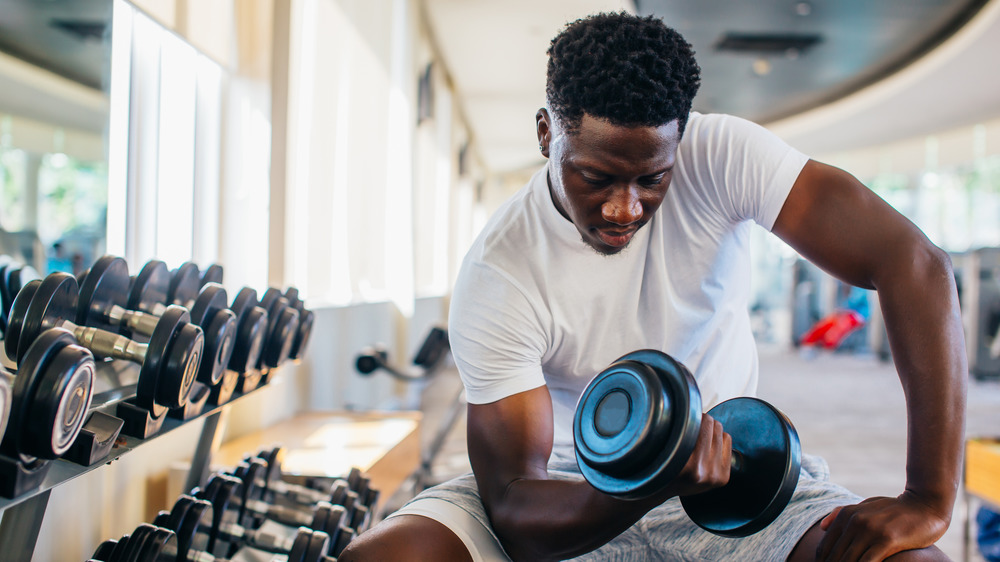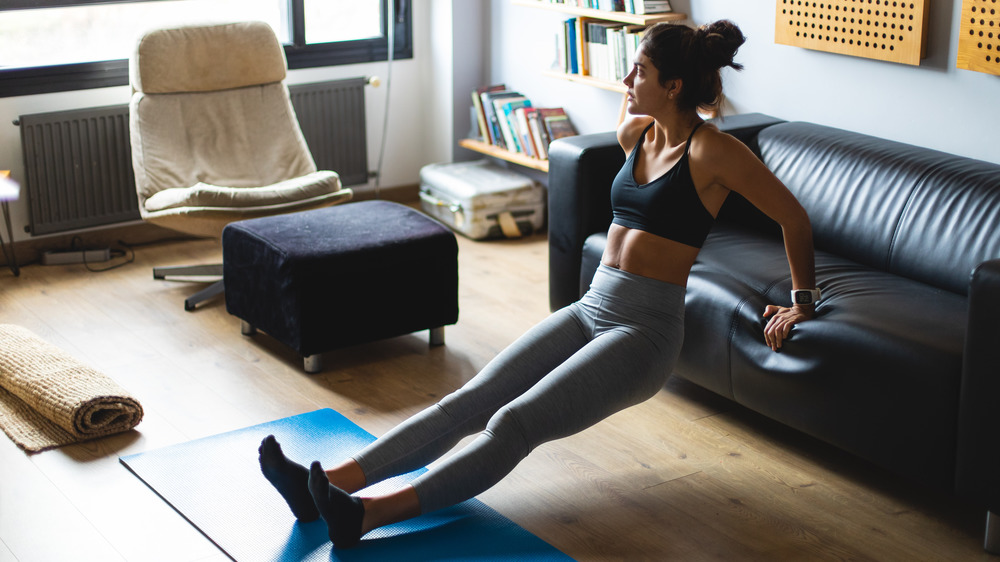Biceps Vs Triceps: What's The Difference?
Everyone wants those lean and well-toned arms, but it's important to know about the different muscles which make up your upper arms. Below the shoulders and aside from the muscle groups which support them, the biceps brachii and the triceps brachii make up the bulk of your upper arms, pun intended.
As noted in the name, the biceps brachii, more commonly referred to as the bicep, is a large muscle located on the front of the upper arm and consists of two heads, the long and short head. Biceps work to enable flexion and supination (outward rotation) of the forearm, support the brachialis muscle of the forearm when lifting or lowering it, and stabilize the shoulder girdle (via Verywell Health). The small head of the biceps also helps keep the scapula, or your wing bones, in place when lifting heavy objects, and the long head of the biceps lightly aids the shoulder (glenohumeral) joint in an array of different positions.
The triceps brachii, also referred to as the triceps muscle, you guessed it — has three heads; the medial, lateral, and long heads (via Healthline). Running on the posterior side of the arm, the triceps are responsible for extending your forearm from a bent position, stabilizing your shoulder, and helping to extend the shoulder back behind your body.
Which exercises to do for biceps vs triceps
Just as they differ in function, training your biceps and triceps should consist of different targeted exercises as well. Healthline recommends sets of multiple repetitions of the following exercises to tone your biceps: barbell curls, dumbbell hammer curls and resistance band curls, among others. When it comes to strengthening those triceps, dips, dumbbell kickbacks, machine triceps extensions, and others can help you achieve the definition you desire.
However, as always, you need to be careful when training any muscle of the body. Common injuries from overdoing your exercises or performing exercises incorrectly could result in biceps tendonitis, triceps tendonitis, or even tears in the muscles themselves. To avoid a trip to urgent care or even the orthopedist, it's important to listen to your body, set realistic exercise goals, and seek the help of a certified personal trainer or coach so you can be sure you're doing the exercises correctly. And remember, you won't go from flabby to toned in one session. In fact, when done properly, it can take months to see visible results after starting a new workout plan. Consistency is key: the medical saying, "start low and go slow" also relates to weight training.


